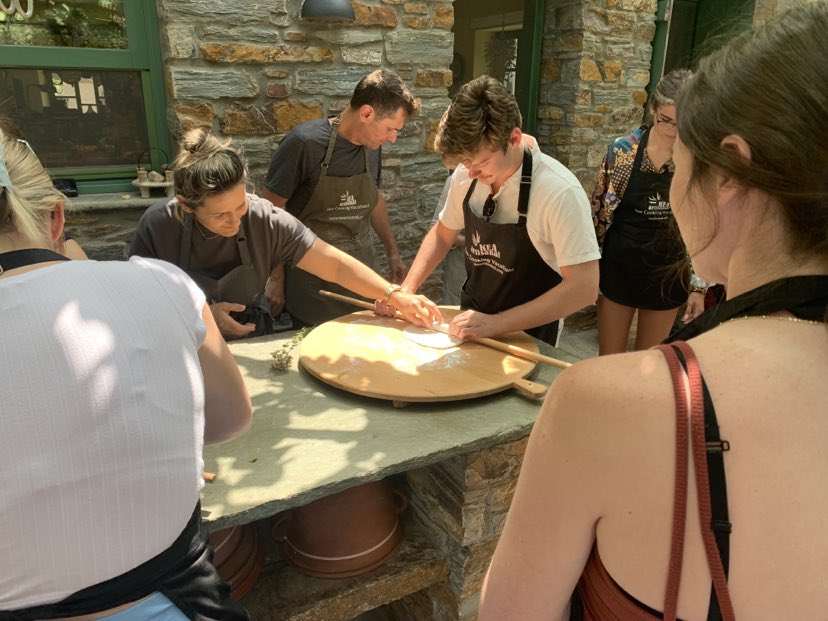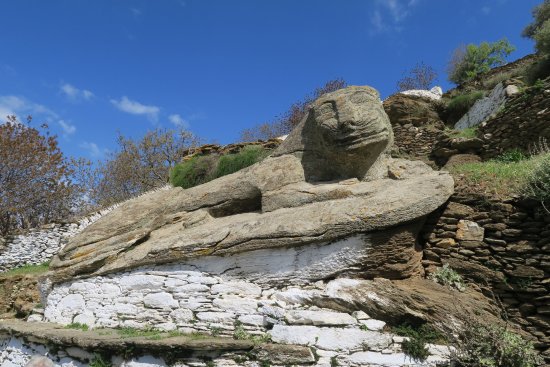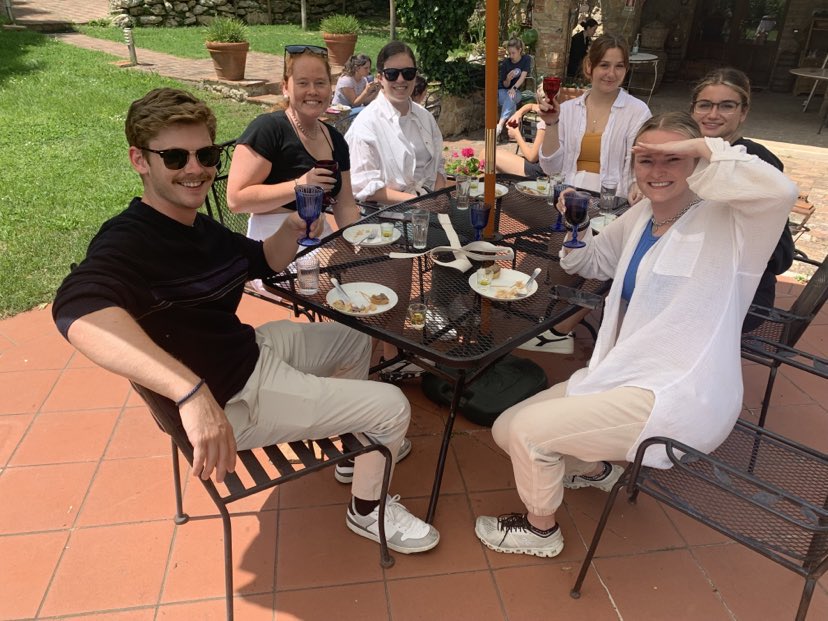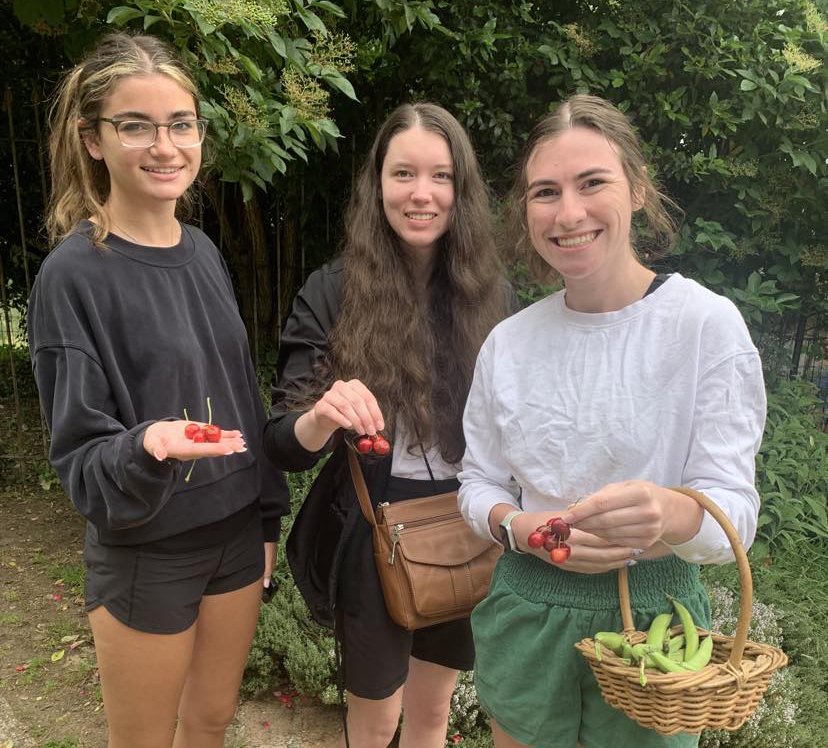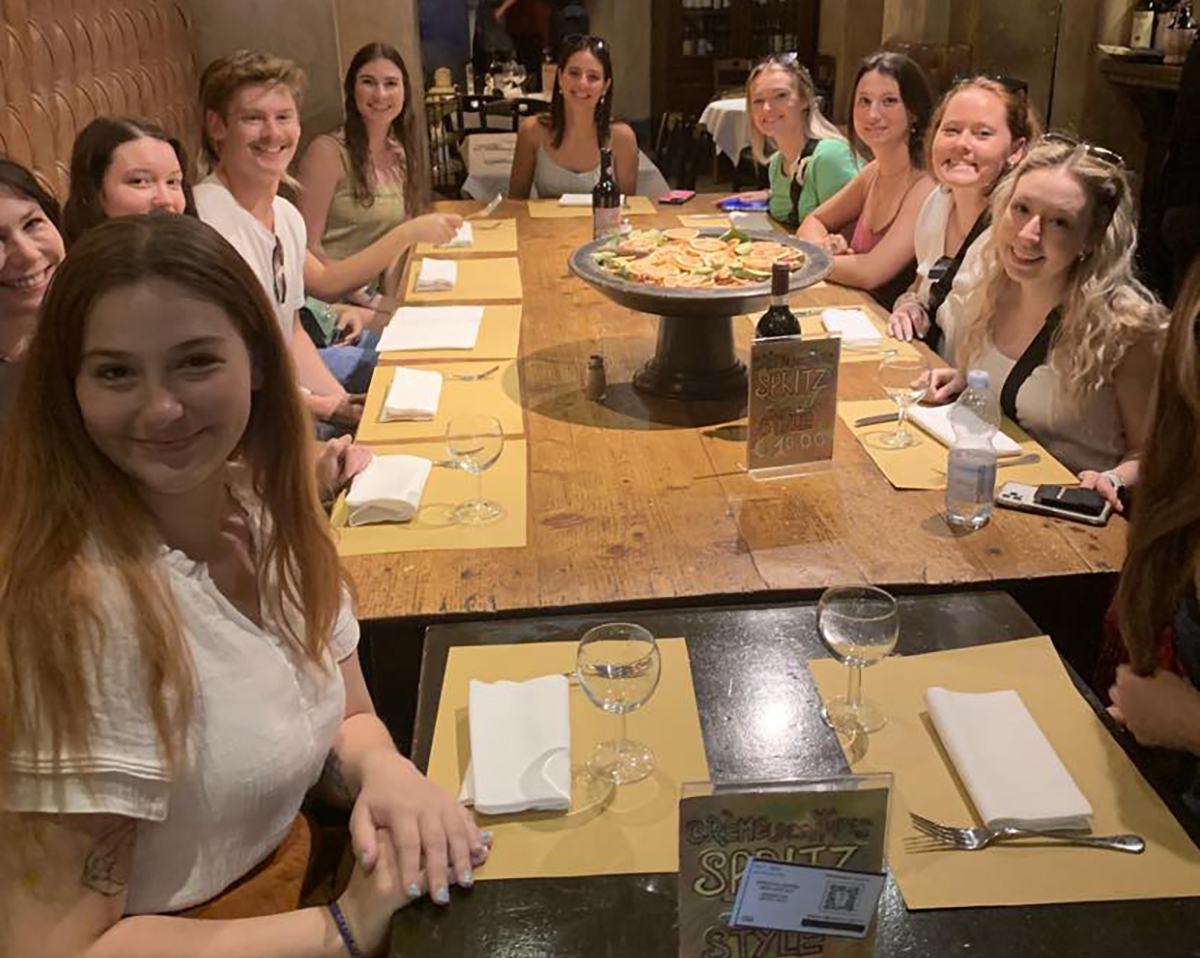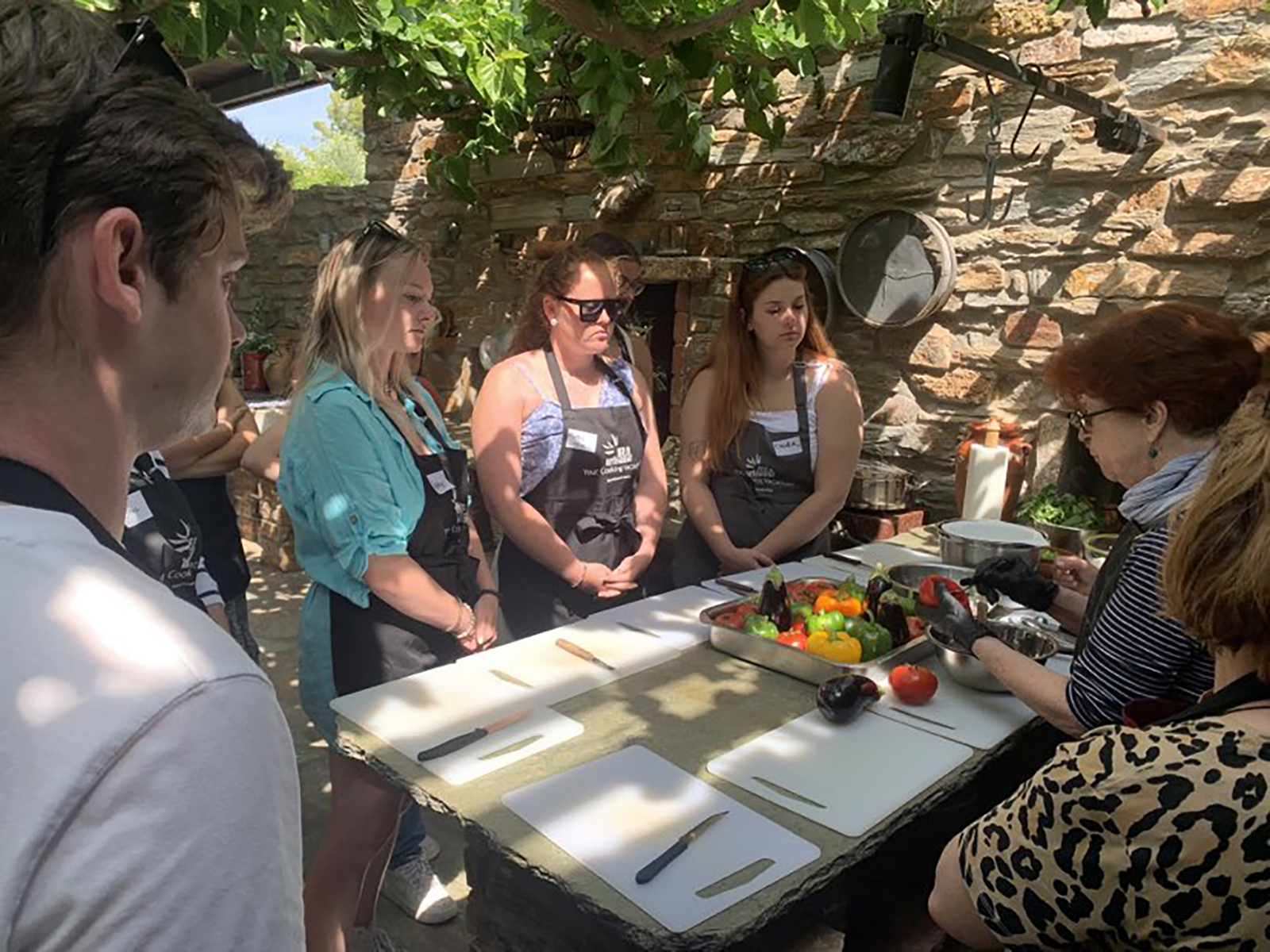Students explore impact of cuisine on Italian and Greek culture
T welve Georgia College & State University students got a close-up of the cultures in Italy and Greece this summer. They experienced new places, tastes and broadened their thinking by learning how local food is produced and processed. The students returned with skills they can use, and a new understanding of how foods help define culture.

“I structured the program to allow students to interact with local people, so they could get a truer picture of the culture and traditions of the places they visited,” said Dr. Craig Pascoe, a history professor at Georgia College. “It opened a new world of knowledge for these students, seeing how cuisine reflects culture.”

Students spent the first 10 days in Florence, Italy. They stayed in apartments in the historic district near the Mercato Ambrosia—the oldest market in the city. They toured historic sites and museums like the Uffizi Gallery, Accademia Museum, the Duomo (Florence Cathedral) and the Roman amphitheater in Fiesole, located in the hills above Florence.
Their classrooms included farms, industries and businesses. They learned in kitchens, butcher shops and cooking schools.
Florence was Georgia College senior biology major Sydney Ryder’s favorite place.
“I loved walking around in Florence, because we had about a five-minute walk to the Duomo and ate breakfast, lunch and dinner right next to it,” Ryder said. “Just being able to walk to mostly anywhere was nice. Only some parts required a bus or train.”
Students spent a few days at the Poggio Etrusco, an agriturismo located near Montepulciano in the Tuscan countryside. While there, they visited a hog farm that raises Cinta Senese pigs—pigs indigenous to the region. The group also went to Podere il Casale, a working goat farm where pecorino cheese is made, as well as La Foce, an estate dating back to the late 15th century.

They savored local Tuscan fare, hiked along the Via Francigena Road. During the Middle Ages, this road connected countries beyond the Western Alps to Rome. Rome was the main destination—along with Jerusalem and Santiago di Compostela—for European pilgrims.
Students also traveled to Panzano in Chianti to visit Antica Macelleria Cecchini, a 300-year-old butcher shop owned by the world-famous butcher Dario Cecchini. They got a demonstration and lecture and paid a visit to the farm where Chianina beef cattle—the world’s largest domesticated cattle—are raised. The experience was capped off with a nine-course meal featuring Chianina beef.
Several students had no real experience cooking, according to Pascoe. It was a challenge, but they learned to prepare dishes like Italian pici pasta to Greek flat breads.
Students experienced authentic cuisine through “learning dinners” at traditional Italian and Greek restaurants. They even had their first class at a local cooking school in Italy—which, for many, was the best part of their study abroad program.
This was true for Ryder. Learning from chefs was her favorite part.
“Meeting the chefs and taking cooking classes were such great experiences,” she said. “I didn’t just learn how to cook. I talked with chefs about their love for food and learned more about the chefs on a deeper level.”
The owner of Poggio Etrusco—a 350-year-old sharecropper home converted into a bed and breakfast and working farm with olive trees and a grape vineyard—is Pamela Sheldon Johns. She’s a well-known chef who has written over 15 cookbooks about Italian cooking and history. Students spent a day making Tuscan cucina povera (kitchen of the poor)—simple cooking comprised of a few local ingredients.

In Athens, Greece, students dined at a variety of restaurants and toured the Parthenon—a former temple on the Athenian Acropolis. Most students spent their free time at pristine beaches near Athens.
On the island of Kea, Greece, the group hiked in the hills to the ancient Lion of Kea, Greece, created almost 3,000 years ago. They traveled in fast boats to the site of Ancient Karthea, the greatest of four city-states in Kea during antiquity. The region is difficult to access, being on the southeastern side of the island, right above the Bay of Poles.
Students enjoyed two day-long cooking classes with Aglaia Kremezi, a well-known author of books on Greek Mediterranean island cooking. They also ate at local Greek tavernas where traditional dishes on Kea were served.
“A 19th century writer wrote, ‘Show me what you eat, and I will show you who you are,’” Pascoe said. “This is what we do. What people eat reflects their traditions, history, surroundings—what foods they have access to—and environment—how the weather and their location impacts what they can produce.”
Ryder enjoyed learning all these aspects of food and culture. She plans to become a dentist. This study abroad program gave her insight into daily diets in different cultures. She wants to use this knowledge in her profession.
“It gave me more in-depth knowledge of how a dish that I’ve eaten and loved since childhood was created and how it influenced into what it is today,” Ryder said. “Food can have such a great impact on your teeth. Knowing the cultural influence of different foods helped me to better understand oral health.”
Pascoe said all his students came away with memories and experiences they’ll carry with them for the rest of their lives.
“They have a better understanding and appreciation for different cultures and traditions, and most importantly,” he said, “what they learned during this experience is something they will never forget.”
Learn more about Georgia College & State University's History and Study Abroad programs.
